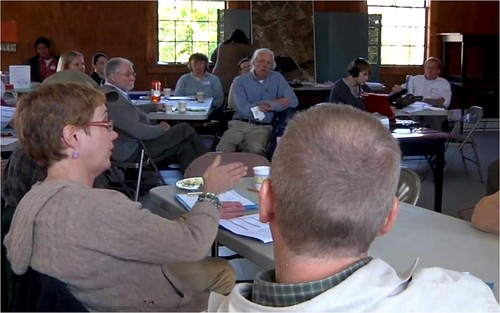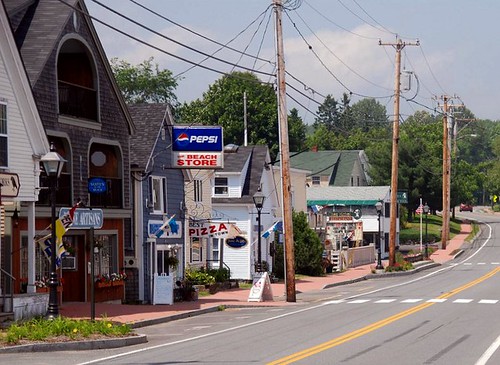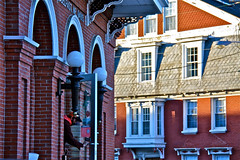The citizen as expert: grassroots planning Down East

Posted January 6, 2012 at 1:36PM
The video at the end of this post is a rare and engaging inside peek at two planning workshops in the small, historic city of Belfast (population 6658) and the town of Lincolnville (population 2042), both in Maine. The most eloquent voices in the room are not professional planners but ordinary citizens who care about their community, raising such issues as how their streets function, building facades, walkability, places for seniors and kids, safety, and the like. I really like it as an example of what real folks – not just we enviros and “urban wonks” – care about, as well as what a citizen planning session feels like.
The workshops were hosted in October 2011 by the local nonprofit Friends of Midcoast Maine, in partnership with the Orton Family Foundation and The Project for Public Spaces, assisted by Vermont-based planner Paul Dreher.
Friends of Midcoast Maine, led by my friend Jane LaFleur, is organized “to help Midcoast communities plan for a vibrant and sustainable future. [The group is] an independent resource that provides expertise in support of smart growth principles.” More specifically, according to a recent annual report, it provides 1) education, workshops and technical assistance, 2) project endorsements and 3) advocacy for sound planning and sensible growth. FMM works along a stretch running roughly 100 miles northeast from Brunswick to Bucksport and including many historic communities.
I love the grassroots nature of the group's work. Among its recent honorees for contributions to smart growth, for example, are a downtown bakery in Waldoboro, a new, mixed-use green building overlooking scenic Rockland harbor, and a fishery cooperative in Port Clyde. (The group has also recognized broader efforts including coordinated planning along the corridor of US Highway 1 and extension of service in the region by Amtrak.)
Writing in the National Trust for Historic Preservation’s Forum Journal, Elizabeth Humstone describes some of the organization’s work:
“One area where citizens have taken action to address rural preservation is in midcoast Maine. When the widening of U.S. Route 1 along the coast was proposed about ten years ago, citizens grew alarmed that the highway would harm the many small towns, the scenic vistas, and the abundant natural resources of the region. They banded together to form Friends of Midcoast Maine (FMM) to educate and advocate for healthy downtowns and the preservation of the rural landscape—places under threat from highway development, sprawl, rising land prices, and loss of jobs . . .
“FMM works with residents to link their goals and priorities to resources such as state transportation funding and regional planning assistance. FMM has developed ways to engage the public and bring more voices into the planning process in this rural region . . .
“As one example, the town of Lincolnville, Maine, asked for FMM’s help in deciding what to do with a historic schoolhouse on a property near the town hall and a fire station. Lafleur encouraged the town to look more broadly at the entire village. She facilitated a visioning session that is now leading to the development of a village center plan. A village blog informs citizens of the plan’s progress and invites their participation.”
I’ve written before about the importance of thoughtful planning to small towns and rural areas. Here, Friends of Midcoast Maine may be a tiny organization but they are making a difference. As promised, here’s a peek inside their workshops:
The Community as Expert from Friends of Midcoast Maine on Vimeo.
Move your cursor over the images for credit information.
Please also visit NRDC’s sustainable communities video channel.



